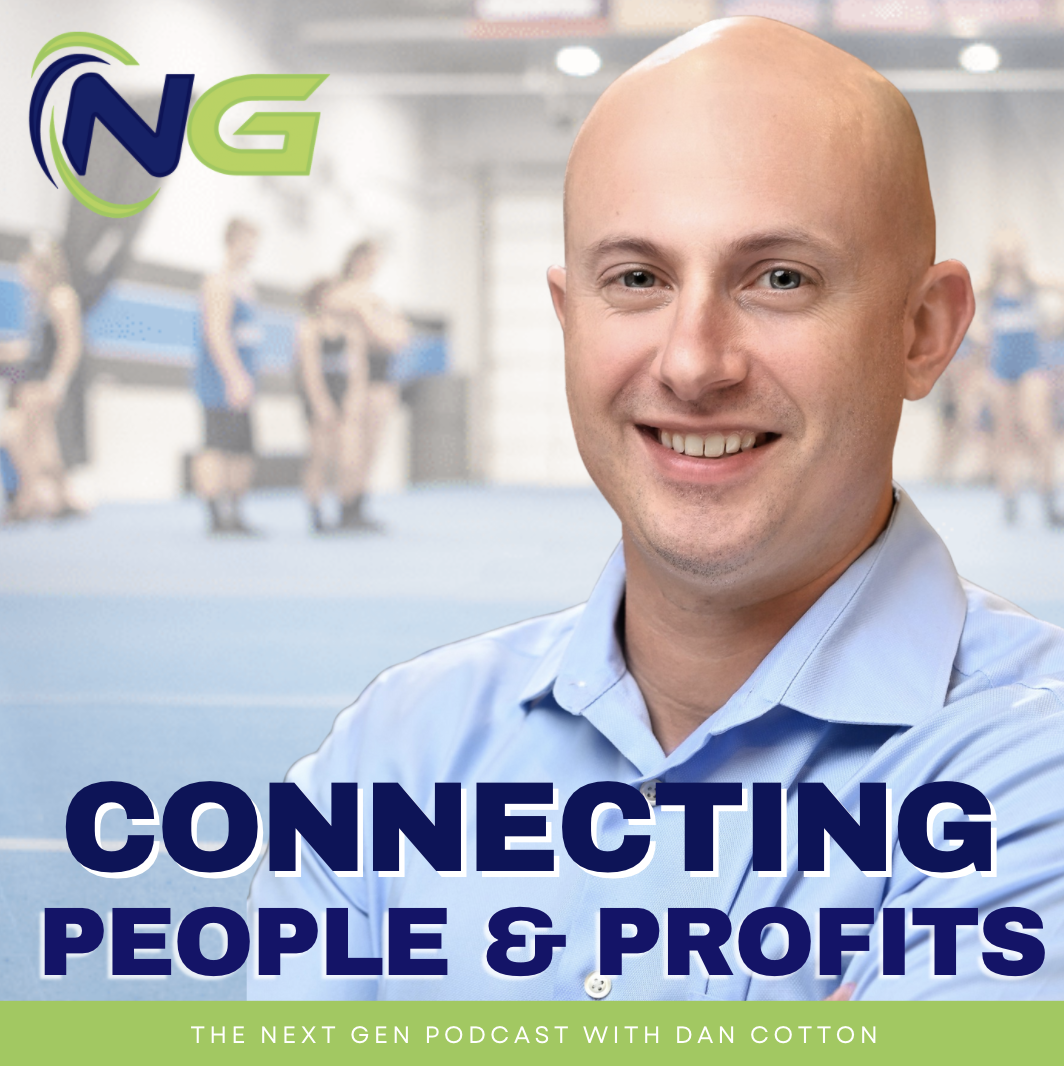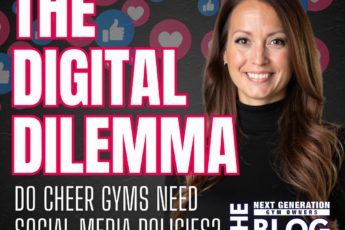Hello everyone and welcome to another episode of the next generation people and profits podcast. I’m your host, Dan cotton. And before we get into the episode if you have not yet subscribed to this podcast, please subscribe so you don’t miss out on any other great future episodes and also share this with anyone who may get some great tips out of this podcast or any of our other podcasts. We are uploading two podcasts a week of amazing content that’s going to help you as an owner, build your business. And if you know another business owner who could really benefit from this information, make sure you share it with them. So they can get something out of this podcast. So let’s get right to the episode. Today’s episode is all about employees and I was having a conversation with another gym owner friend of mine who was struggling with an employee and also thinking about some struggles that I had been having with employees and also talking to another coach who was having some struggles with employees. And I just was spending a lot of time really thinking about what’s going on with these employees. And you know, we hear a bunch of things, it’s the millennial age or it’s the Generation Y and all these other generational issues. But, you know, at one point in time, we were that generation that the older generation had a problem with and so this episode is the real reason your employees suck at their job.
So there are three main factors that we’re going to break down for this. The first one is the majority of employees start out a job wanting to do it. Well, they start out wanting to be good at their job, wanting to be good employees. They’re not starting out with the intent of ruining your life. Number two is the path to sucking at their job starts with the first step and is death by 1000 cuts. And then the last one is the number one reason your employees suck at their job and I’m going to save it for when we get there.
All right. So as I mentioned, I was talking to another gym owner and she was having some frustrations with an employee and I’m not going to go into great detail because it’s not my story to share. But she was really frustrated with this employee. And it had been an ongoing issue. We’ve talked about this individual before and she was just very frustrated and looking for options of how to proceed. And at the same time, I had just been at my gym the day before and I was there doing choreography for a youth team. And I’m not normally at my gym on Saturdays. In fact, I’m very rarely at my gym on Saturdays. And Saturday is our big recreational tumbling day. We do a lot of rec tumbling. The majority of our kids that do tumbling classes are coming in on Saturdays and training with our staff and they’re my rec team staff so I’m not there all the time with them. In fact I’m rarely there and it’s delegated to my recreational program manager. So I was there this Saturday, and actually the recreational program manager was not there. They were out of town. And I’ll be honest, I was really frustrated with the product that they were delivering. I did not think that they were doing a good job at their job. Now were they running the classes? Yes. But were they doing all sorts of things that are no goes in our gym? Yep, there were staff members sitting down during class. There were staff members who walked out a minute late to their class. There were staff members who weren’t walking athletes out and checking in with the parents. They just weren’t doing those additional things that we expect of them within our facility and we charge a pretty high price for our recreational programming and I was texting with my co owner and wife and we were chatting about this and I was kind of going off a little bit and we’ve been talking and I was like look, people are paying Marriott level prices and they’re getting Motel Six service and I’m not good with that. We need to correct this issue. And now it’s really easy to sit there and be frustrated and be like they are messing up and be pissed at them. And, you know, it’s easy to go into that mentally and be like them, them them them them them them. But you have to like reflect and say why is it that they’re doing that?
And so thinking about it, the first thing off is going back to that point number one is most employees when they start a job, they’re not starting a job with the intent to be bad at it. They’re starting the job with the intent to be good. They want to coach, they want to work for you. They want to be in your facility and they want to be good at their job. So something is happening between that initial interview process, that initial hiring, and then starting out and being really, really excited to work for you. And then now where you’re at where you’re frustrated, and they’re not delivering on the things that you think they should be delivering on and they very likely may have even been trained on and been told and know this information but they’re now not doing it. And there are a lot of reasons for this. You know, everyone goes through a process in their careers in their different jobs. I mean, just think about relationships. There’s really nothing you do in life that you love every single day and never have those days where you’re like I’m kind of over this I don’t really want to be here. That’s just a reality of the human condition. You may absolutely love baking more than anything in the world. But if you do it enough, it gets a little bit redundant. It gets boring. You’re not as excited to do it. I love camp. I love my summer camps. I still love working camp and it amps me up. It gets me excited. Every single year and there are still times at camp I look forward to going to camp all year long. And there are still times at camp where I’m like I’m over it. I don’t want to do it today. I’m just tired. I want to take a nap. I’m like not feeling like going the extra mile. So if that can happen to me as the owner, then certainly that’s going to happen to our employees as well.
So they start out with that mindset of wanting to do a great job but just like getting in a relationship. There is a honeymoon phase where everything is amazing and everything is wonderful. And then we’re gonna get past that point where now we’re going steady and now we’re in a real relationship and people’s real sight is going to come out and you’re gonna get to see when people are lazy and when they’re moody and when they’re frustrated. And so we have to deal with that human condition side of things. But we need to always remind ourselves that our employees started out their career their employment with us most likely than not wanting to be good at their job. So it’s really important to frame things in that way.
So now we get to the number two which is the path to sucking at their job oftentimes starts with the first step and is death by 1000 cuts and I’m gonna break those two things down. So when I’m talking about the first step, you really need to look diligently about what your onboarding and training process is like. What I see a lot of times in chair gyms is owners are so desperate to have a coach that when someone comes in who is decently qualified, passes a background check and seems to know what they’re doing. We are in a hurry to get them coaching those classes or that team or whatever it is we need them doing as fast as humanly possible. And that oftentimes means we end up cutting corners and we ended up shortcutting things in the training and train up process that we shouldn’t shortcut. And we need to be really, really diligent about that initial training. So if you have not built a true onboarding training curriculum with set benchmarks and set expectations of what staff members will demonstrate to you, as well as time spent explaining to them and helping them learn the culture and the expectation of going the extra mile that you have for them. If you haven’t done that you’re setting themselves, you’re setting them up to fail. You are not giving them the proper tools to be successful.
And it’s very easy as an owner as someone who started the gym as someone who’s been there from the beginning to be like, well, you should just know this like, to me, it’s obvious don’t sit down during a class. That’s just always been the rule. You just don’t sit down when you’re teaching. It’s not professional. Sit down when you’re taking a break. Sit down when you’re having a sip of water but when you’re giving instruction you should be up on your feet engaging with the athletes and for me that’s like a no brainer, but for your employee it might not be a no brainer. They may not see that as as big of a deal. They may have had a coach who coached on their knees a lot. Get off of your phone is another one that may seem like a no brainer to you but as an employee they may think well I’m you know I’m just timing kids doing stretching and so me texting on my phone isn’t really a big deal. I just am using my stopwatch or me sitting down with them. Is it really a big deal? I’m just using my stopwatch and they just don’t know and don’t fully understand and value why that is important. So you need to spend the time to build that culture and educate them on why it is important, as well as understanding how important their role is to your program. You need to make sure your employees know how valued they are and how important they are and how very small things that they do can negatively impact the program as a whole. Oftentimes, employees will cut corners not realizing how big of a deal they can be not realizing that that athlete who you sat down and didn’t really engage with during their class. is now going home and their mom watched class and didn’t see any progression. And they’re like, You know what, we’re not going to do it anymore. We’re going to disenroll and now you have one less athlete, one less paying member and that makes it just a little bit harder to pay their payroll. So they aren’t thinking through those things. And so that’s the first step portion. We’re not taking the time in the initial training to really train our employees.
Additionally, it’s that death by 1000 cuts and there’s two parts to this one is are you doing ongoing training and revisiting the things that you trained them on at the beginning? If you’re not what you fail to continue to reinforce will gradually go away? Think about just let’s put it into an exercise mindset. So if I go and I work out really really hard for a year I’m gonna get in good shape. I’m gonna go to the weight I’m gonna hit the weights, you know, four times a week, I’m gonna run two times a week. My cardio is good, my weights are good, I’m strong, I’m athletic, and then I stopped going to the gym, or I go maybe twice a week, and I just don’t really monitor my diet. Well, that’s going to last for a little while, but over time, my body is going to become out of shape. We have to keep our employees in shape so we have to continue to remind them. Yes. Is it redundant to say hey, we don’t sit down during class every six months? Yes, it is. Is it a bad reminder? No, it’s not so you have to do those things. You have to do ongoing training ongoing touchpoints with your staff to continue to keep them in the right mindset.
And then the other side of death by 1000 cuts is a lack of holding people accountable. for things that are going wrong. So they’re, you know, they sit down during class and they sit down during class and they sit down during class and they do it for six months before anyone tells them Hey, remember, we don’t sit down during class. We don’t sit down when we’re coaching. And so it becomes very easy. Now that’s become a habit rather than something being addressed immediately and being nipped in the bud so it’s now not going to become a habit. So it becomes at death by 1000 cuts we allow them to get away with a behavior or they’re just no one sees it. So this behavior is tolerated for a long period of time and now it’s harder to correct rather than simply maintaining the standard from the beginning.
So the third one and this is the one I said I was kind of saving for the end and it’s the number one reason your employees suck at their job. And it kind of combines the two I just talked about but the number one reason is you and by proxy your managers are the real reason your employees suck at their job. Because if you as an owner and or like I said by proxy your managers are doing a good job training your staff at the beginning, continuing to do ongoing training with them and holding them accountable when they have issues. You will have great employees if you neglect any one of those three things you will have less than stellar employees now will you have the diamond in the rough, the person who just they get it and they work hard and they’re, you know, intrinsically motivated and they just get it they should they would be a great owner someday. Yep, there absolutely are those employees. They exist, but they’re going to be fewer and farther between than the other employees, the normal employees, the employees that you have to train that you have to hold accountable that you have to continue to ongoingly train.
So you are really the key. You’re the linchpin, and at the end of the day, even with managers you’re still the linchpin, because did you train your managers to be great managers? That was actually my big takeaway as I was thinking about what was going on in the gym. I was like, well, we have a recreational program manager and he wasn’t there but also how much training have I given him as a manager? Not enough, not enough training to be a good manager like these are the expectations and then continuing to supervise him to ensure he is supervising and delivering for his people he is supervising. It’s a trickle down effect. of supervision. And it is very, very important that you have that if you don’t and if there is a break in any one of the chains, things are gonna go south and it starts with you. It then goes to your managers if you have them. And then it goes to those other two things we talked about. So really at the end of the day, you are the key, you’re the driving force. So if your employees are struggling, if your employees aren’t delivering, you need to take a step back and say where did I potentially go wrong? Now, you can absolutely turn these situations around. You can change the course of this process, but only through diligent work to build your culture, train your staff and supervisory execution. The hardest part is holding people accountable.
And honestly having a partner who is in it with you, but can tell you in an unbiased way that you should do something about a situation or what you should do can be very helpful. One of the hardest things to know as an employer especially because oftentimes we hire athletes we once coached or people we care about and have an investment in is to know when it’s time to salvage something, and when it’s time to let someone go. And so having that partner can be really helpful. That’s one of the things I enjoy being able to do for clients that I work with is being able to be that impartial person to step in and say, Look, you know, you messed this up, and you can fix it or, Hey, yeah, you messed up, and we dropped the ball on this, but it’s too far gone. And even in the rare occasions which has happened, and I’ve been there for them, I’ve had an employee who was like this, Hey, they’re just a bad employee cut bait. Fire them right. It all rests on you and your management team, but also you need to know when a ship is too far gone, and you need to fire someone. This is going to happen. You can’t always save every employee. There are going to be times when no matter what you do, no matter how much you invest, no matter how much retraining you do and recalled your building you do. You cannot recover the Tailspin that you’re in and it’s time to just cut bait. And the assessment I like to use for this is if I’m going to spend an inordinate amount of time like if I look at this and I go I’m going to have to dedicate more time to this person which is then going to cause me to neglect my other employees and allow this to be a problem for my other employees, then it’s probably time to let this person go.
Additionally, it’s important to have your no go absolutely not situations. Absolutely. This is not something we’re going to tolerate kind of transgressions. So for instance, an employee who no calls and no shows to work, that’s pretty much an immediately fireable offense. There’s really not a lot of reasonings for why someone would just choose to not show up and not contact you and not call like your your phone better have been run over by a truck and you’re completely unable to reach anyone or maybe you’re stuck in the woods and your car broke down and your phone doesn’t work and then we should be setting a rescue party or you’re like in the hospital. Those would all be reasons to no call no show. Otherwise, there should be at least the courtesy of communicating Hey, I’m not able to come to work today.
So leaving this episode, what I would like you to do is the next time you encounter a behavior in your staff that you dislike that you’re like, This is not what I want to be occurring in my gym. I want you to write it down, and then try to backward track to where you think things went wrong, resulting in that less than desirable response from your employee. And if you can do that, try to systemize that out. So you don’t encounter that later in the future from another employee. Also, obviously, I want you to correct it with that employee right away. One of the other big things I would just suggest and and I’m guilty of this all the time because although I’ve worked in law enforcement and although I’ve been in very hairy situations, I’m actually somewhat non confrontational. I don’t love to just go up and like light people up. I definitely have my moments where I do it but it’s not my favorite thing in the world to do and really what I should be doing is going around and being like, Hey, stand up during class like that simple comment. Yes, people aren’t gonna like hearing it. But I’d rather do that than allow them to do it wrong for an hour. Yes, I would. So make sure you’re doing those things. Make sure your managers are doing those things, and you will prevent future issues from developing.
Alright everyone, thank you for joining. Like I said, please share this podcast with someone who may get something out of it. If you’re looking for another great church related podcast, check out the let’s talk to your podcast with Jason Larkins. He’s a good friend of mine. We’ve been on a couple episodes together on his podcast. I’ll actually be posting the episode we did together on athlete safety on this podcast as well. I will probably be releasing that this Friday. It’s a really great episode. It’s a long one but we talk about all of the things that we as next gen would recommend you do in your gym to help keep your athletes safe. Thank you for joining us, make sure you’ve gone to our NG churn gymnastics owners Facebook group and you’ve requested access. Also check out our website next gen owners.com And with that we will catch you on the next episode.









